Tucked away in the heart of Vietnam’s capital, the Ho Chi Minh’s Stilt House stands as a humble yet profound testament to the life and legacy of the nation’s beloved leader, Uncle Ho. This unassuming wooden structure, nestled amidst the lush greenery of the Presidential Palace compound, offers visitors a unique glimpse into the simplicity and humility that defined Ho Chi Minh’s existence. More than just a historical site, it is a living embodiment of the values that guided Vietnam’s struggle for independence and the ideals that continue to shape its spirit.
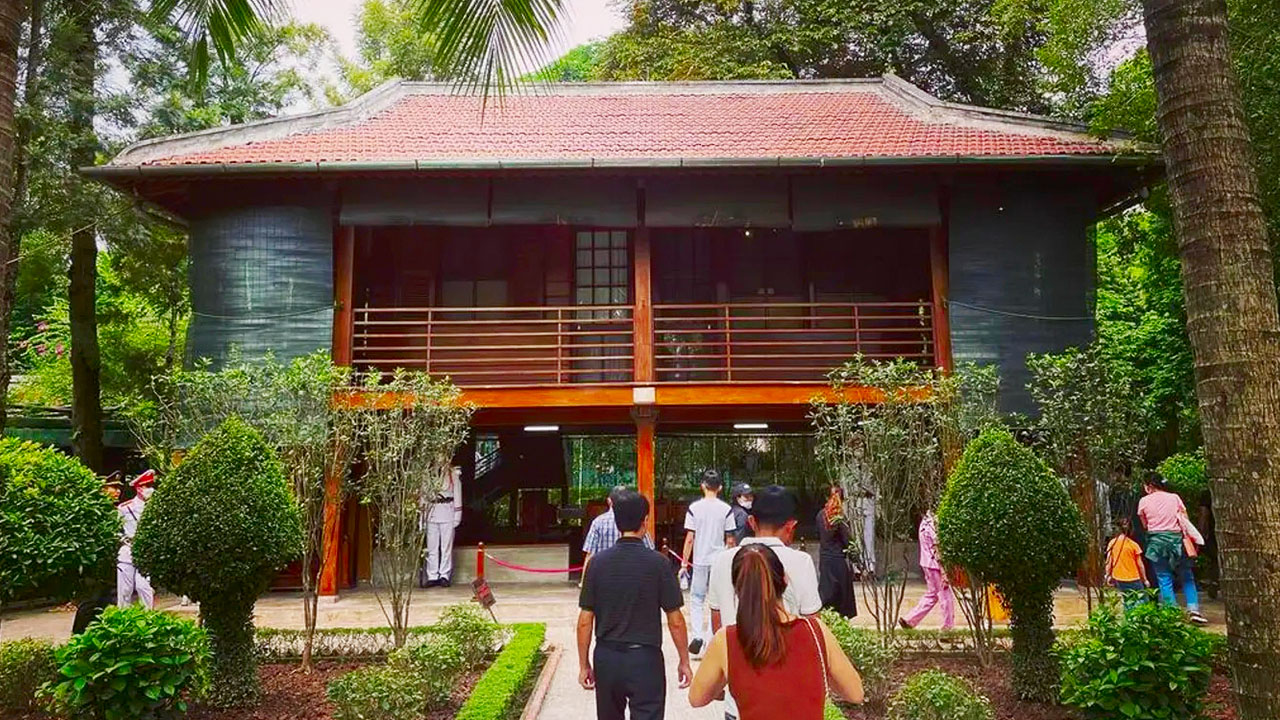
Where is Ho Chi Minh’s Stilt House?
Ho Chi Minh’s Stilt House, or “Nhà Sàn Bác Hồ” as it is affectionately known by locals, is situated within the picturesque grounds of the Presidential Palace on No. 1 Ngoc Ha Street, Ba Dinh District, Hanoi. Nestled amidst a serene landscape of fish ponds, fruit trees, and fragrant flowers, the stilt house stands as a tranquil oasis in the heart of the bustling city.
The Presidential Palace complex itself is a sprawling estate that once served as the residence and administrative center for the leaders of French Indochina. Today, it serves as a historic site and a testament to Vietnam’s rich cultural heritage.
How to get to Ho Chi Minh’s Stilt House?
By Motorbike
For those seeking a more adventurous and authentic experience, navigating Hanoi’s bustling streets on a motorbike is a popular option. Thanks to the widespread use of Google Maps and other navigation apps, finding your way to the stilt house is relatively straightforward. Simply enter “Ho Chi Minh’s Stilt House” or “Nhà Sàn Bác Hồ” into your app, and follow the directions.
Upon arrival, you’ll find two designated parking areas specifically for motorbikes, ensuring a hassle-free and convenient visit.
By Taxi or Ride-sharing Services

For those preferring a more relaxed and air-conditioned journey, taxis and ride-sharing services like Grab or GoViet offer a comfortable alternative. Simply provide the driver with the address “Ngoc Ha, Ba Dinh, Hanoi” or “Khu Di Tích Nha Bac Ho, Ba Dinh, Hanoi,” and they’ll navigate you directly to the entrance of the Presidential Palace compound, where the stilt house is located.
Ho Chi Minh’s Stilt House Opening Hours & Entrance Fee
Opening Hours
The Ho Chi Minh Stilt House is open to visitors daily, except for Mondays and Fridays, when it is closed for maintenance and preservation purposes. The opening hours are:
- Morning session: 7:30 AM to 11:00 AM
- Afternoon session: 1:00 PM to 4:00 PM
It’s important to note that the stilt house can get quite crowded during peak hours, especially on weekends and public holidays. To avoid long queues and ensure a more enjoyable experience, it’s recommended to visit during the early morning or late afternoon hours.
Entrance Fee
One of the most appealing aspects of visiting the Ho Chi Minh’s Stilt House is its accessibility to all. Vietnamese tourists can enter the premises free of charge, while foreign visitors are required to pay a nominal fee of 25,000 Vietnamese Dong (approximately $1 USD).
This affordable entrance fee ensures that people from all walks of life can experience and appreciate this significant piece of Vietnam’s history and cultural heritage.
History of Ho Chi Minh’s Stilt House Hanoi
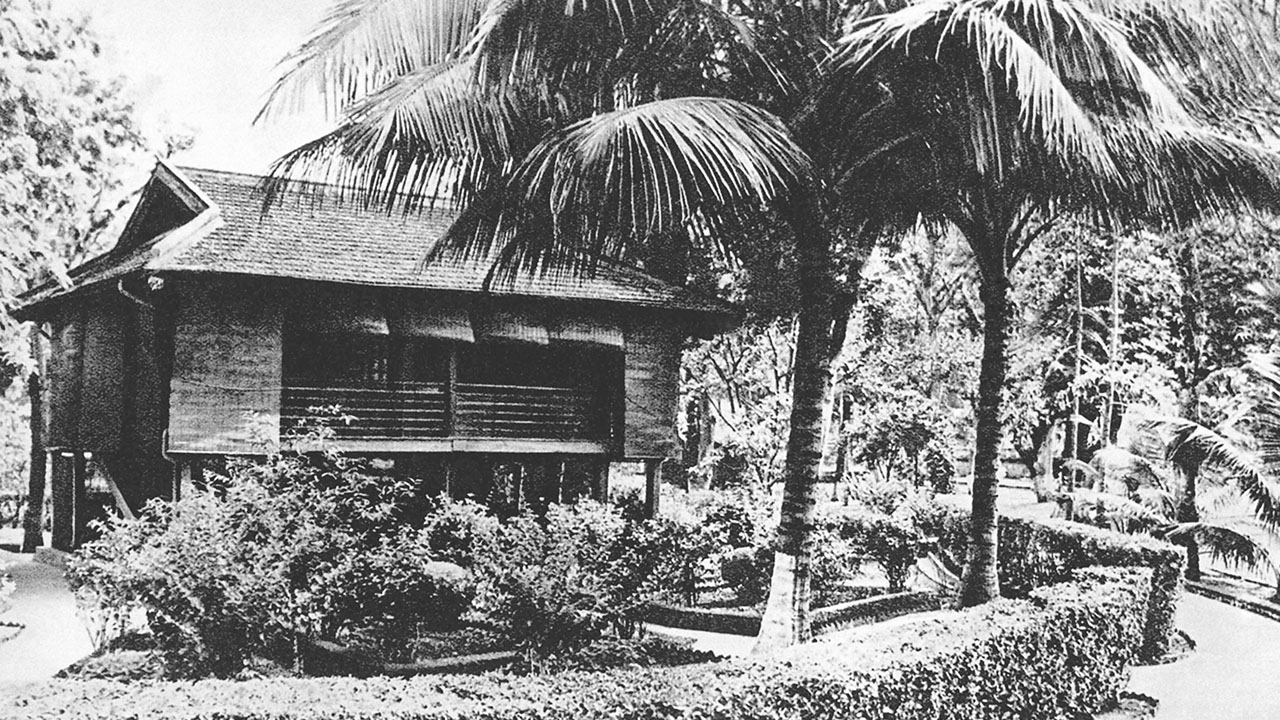
Origins and Construction
The Ho Chi Minh’s Stilt House holds a special place in the hearts of Vietnamese people, as it was built in 1958 at the express wish of Ho Chi Minh himself. The leader’s fondness for the traditional architecture of the Tay and Thai ethnic groups, which he encountered during his time in the Viet Bac War Zone (present-day Thai Nguyen Province), inspired the design of this humble abode.
Constructed by skilled artisans from the Dai Tu District of Thai Nguyen Province, under the supervision of Nguyen Van Ninh, the stilt house was meticulously crafted to reflect the simplicity and authenticity that Ho Chi Minh held dear.
Significance and Legacy
From 1958 until his passing in 1969, the stilt house served as both the presidential residence and office for Ho Chi Minh, affectionately known as “Bác Hồ” (Uncle Ho) by the Vietnamese people. It was here that he lived, worked, and welcomed foreign dignitaries, all while embodying the values of humility, frugality, and dedication to the cause of national liberation.
After his death, the stilt house was preserved as a historical monument, allowing visitors to gain a deeper appreciation for the life and ideals of this remarkable leader. Today, it stands as a powerful symbol of the sacrifices made and the principles upheld during Vietnam’s struggle for independence, reminding all who visit of the enduring spirit of resilience and determination that defines the Vietnamese nation.
Architecture of Ho Chi Minh’s Stilt House
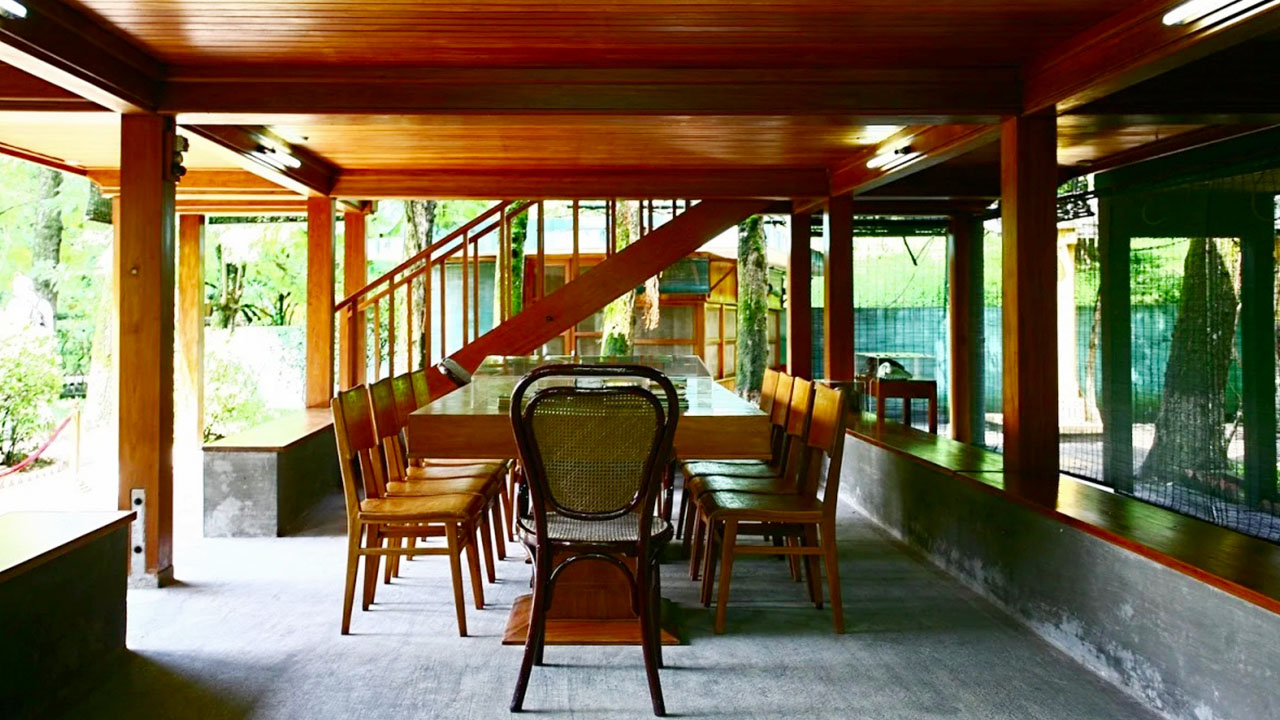
Traditional Stilt House Design
The Ho Chi Minh’s Stilt House is a remarkable example of traditional Vietnamese architecture, with its wooden construction and stilted design reflecting the ingenuity and resourcefulness of the ethnic minority groups that inspired its creation. The structure itself is a single-story building, elevated on sturdy wooden columns, allowing for natural ventilation and protection from the elements.
Upon entering, visitors are immediately struck by the simplicity and functionality of the interior layout. The main living area, where Ho Chi Minh received guests and conducted meetings, is adorned with traditional furnishings and artifacts that provide a glimpse into his modest lifestyle.
Harmonious Integration with Nature
One of the most striking features of the Ho Chi Minh’s Stilt House is its seamless integration with the surrounding natural environment. Situated amidst a tranquil fish pond, fruit trees, and fragrant flowers, the house exemplifies the Vietnamese concept of living in harmony with nature.
The open-air design and the use of natural materials, such as wood and bamboo, create a sense of unity with the surrounding landscape, inviting visitors to appreciate the beauty and serenity of the natural world.
Attractions near Uncle Ho’s Stilt House
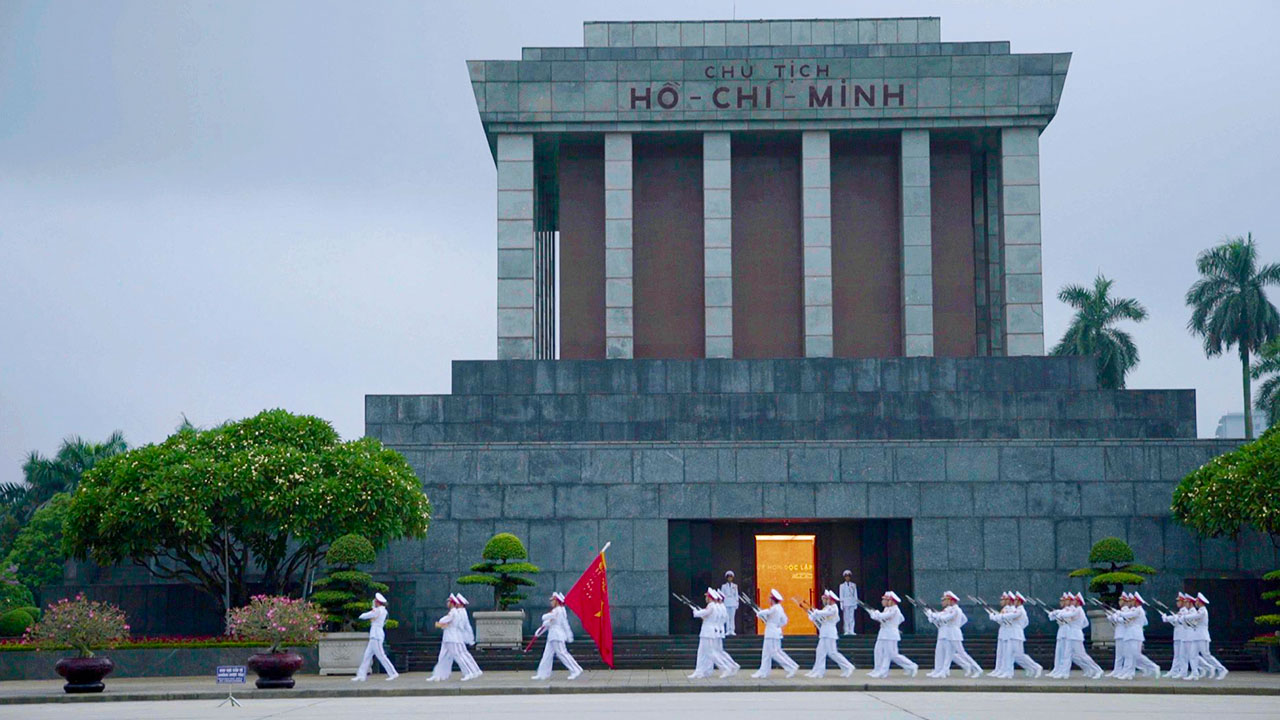
Ho Chi Minh Mausoleum
Located within the same Presidential Palace compound, the iconic Ho Chi Minh Mausoleum is a must-visit attraction for anyone exploring the area. This imposing granite structure houses the embalmed body of Ho Chi Minh, preserved in a glass case and guarded by a ceremonial honor guard.
Visitors can pay their respects to the revered leader by joining the solemn procession that winds through the mausoleum, offering a chance to reflect on his enduring legacy and the sacrifices made for the nation’s independence.
Ho Chi Minh Museum
Just steps away from the stilt house, the Ho Chi Minh Museum offers a comprehensive and immersive experience, delving into the life and times of Vietnam’s beloved leader. Through a series of interactive exhibits, multimedia displays, and artifacts, visitors can gain a deeper understanding of Ho Chi Minh’s journey, from his early years as a revolutionary to his pivotal role in shaping modern Vietnam.
The museum’s thoughtfully curated collections shed light on the leader’s personal life, his political philosophies, and his unwavering commitment to the cause of national liberation.
Presidential Palace
The Presidential Palace, a grand colonial-era building that once served as the residence and administrative center for the leaders of French Indochina, now stands as a testament to Vietnam’s rich history. Visitors can explore the palace’s lavish interiors, admire the intricate architectural details, and gain insights into the country’s struggle for independence from French colonial rule.
House No. 54
For those interested in exploring the lesser-known facets of Ho Chi Minh’s life, a visit to House No. 54 on Hoang Hoa Tham Street is a must. This humble abode served as a temporary residence for the leader during the tumultuous years of the First Indochina War, offering a unique glimpse into his life as a revolutionary and a strategist.
One Pillar Pagoda
No visit to the Ba Dinh District would be complete without a stop at the iconic One Pillar Pagoda, a remarkable architectural marvel dating back to the 11th century. This unique Buddhist temple, constructed on a single stone pillar emerging from a lotus pond, is a testament to the ingenuity and craftsmanship of ancient Vietnamese artisans.
What to eat when visiting Ho Chi Minh’s Stilt House
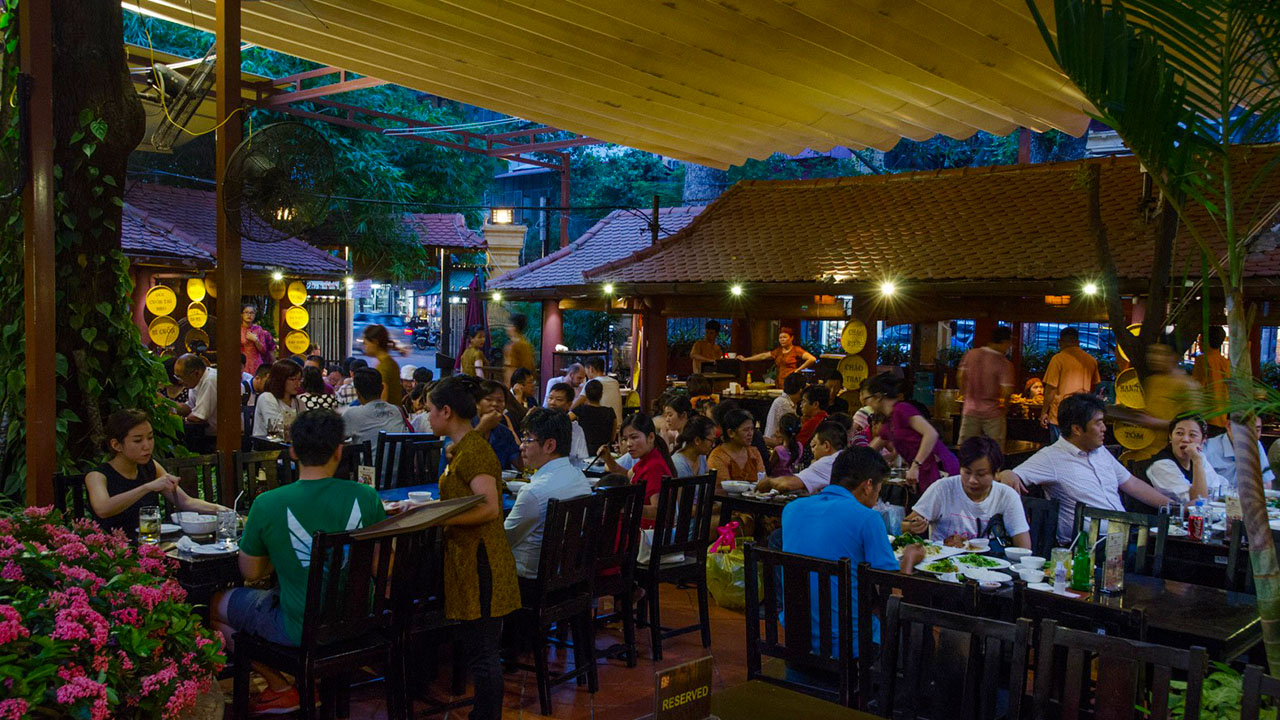
Authentic Vietnamese Cuisine
No culinary journey in Hanoi would be complete without indulging in the city’s rich and diverse food scene. The area surrounding the Ho Chi Minh’s Stilt House is home to numerous street food stalls and local eateries, offering a tantalizing array of authentic Vietnamese dishes.
From the iconic Phở Noodle Soup, with its fragrant broth and tender slices of beef, to the crispy and flavorful Bánh Mì sandwiches, visitors can embark on a gastronomic adventure that truly captures the essence of Vietnamese cuisine.
Street Food Delights
For those seeking a more adventurous and immersive culinary experience, the vibrant street food scene in Hanoi is a must-try. Stroll through the bustling alleys and markets surrounding the stilt house, and you’ll be greeted by a mouthwatering array of street food vendors, each offering their own unique specialties.
From sizzling bún chả (grilled pork patties with noodles) to crispy bánh tôm (shrimp fritters), and refreshing chè (sweet dessert soups), the flavors and aromas will tantalize your senses and leave you craving for more.
Conclusion
The Ho Chi Minh’s Stilt House in Hanoi is far more than just a historical site; it is a living embodiment of the values that have shaped Vietnam’s rich cultural heritage and its unwavering spirit of resilience. From its humble origins as a traditional stilt house inspired by ethnic minority architecture to its profound significance as the residence and office of the revered leader Ho Chi Minh, this remarkable structure offers visitors a unique opportunity to connect with the nation’s past and gain a deeper appreciation for its present.
As you explore the serene grounds, admire the intricate woodwork, and imagine the countless meetings and discussions that took place within its walls, you’ll be struck by the enduring power of simplicity and the profound impact that one person’s unwavering dedication can have on an entire nation.
Whether you’re a history buff, an architecture enthusiast, or simply someone seeking to understand the rich tapestry of Vietnamese culture, a visit to the Ho Chi Minh’s Stilt House is an experience that will leave you inspired, enlightened, and forever connected to the spirit of this remarkable nation.


